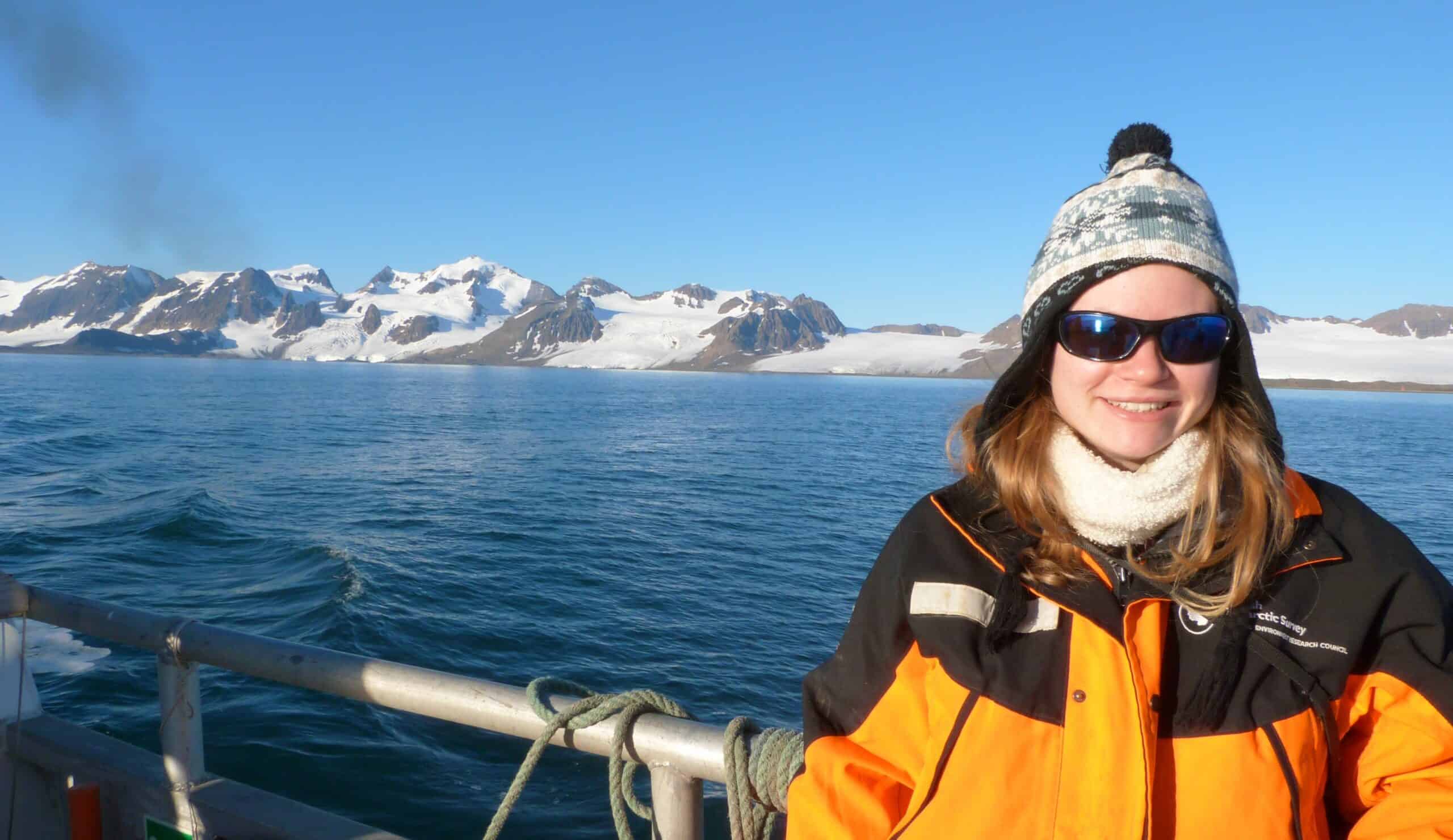My name is Dr Sammie Buzzard and I’m a climate scientist. Specifically, I research the Earth’s coldest places, using maths to see how they’re changing and what may happen to them in the future.
Before I go on to tell you about how I got here, I should make one very important point – I wasn’t the best in my class at maths at school! I had a friend who would always get the answers much more quickly than me and it was very annoying… I mention this specifically because you don’t need to be a maths genius to do what I do, you just need to be willing to persevere until you can get the right answers.

I studied maths at Exeter University. I took a 4-year course, which was an Undergraduate and Master’s combined, and in the final two years I took courses that were increasingly focussed on climate science. I did my dissertation on wind farms, looking at the statistics of wind energy. I then went on to do a PhD at the University of Reading. There I was part of the Department of Meteorology, and I carried out research into how Antarctica’s ice shelves were melting.
Since finishing my PhD I’ve carried on working in climate science, including two years spent in the USA at Georgia Institute of Technology before taking up my current job as a Lecturer at Cardiff University. I’ve also been lucky enough to carry out fieldwork in the Arctic. I certainly never imagined when I first considered a maths degree that it would lead me to the polar regions, or joining an American Marching Band.

A typical day can involve creating and delivering lectures and activities for students at Cardiff, coding in my office, having meetings with colleagues worldwide to discuss research or writing applications for funding. It’s always varied so I rarely get bored, although there is also a fair amount of admin, so as with any job there are some downsides.
The maths I do involves lots of differential equations, specifically to work out how heat is transferred through Antarctica’s ice. I also need to create computer code (I use Python) to solve these equations, and use lots of different algorithms to determine where any water from the melting ice might go.

If you don’t want to jump straight into a PhD then keep an eye on the websites of places like the UK Met Office and the British Antarctic Survey, which sometimes run internship programmes where you can get a flavour for research. For the polar regions specifically, the Association of Polar Early Career Scientists also run a jobs board
Find out more in this interview with Dr Sammie Buzzard, made by the Advanced Mathematics Support Programme.
The IMA would like to thank Dr Sammie Buzzard, Lecturer in Climate Science at the University of Cardiff for writing this article






